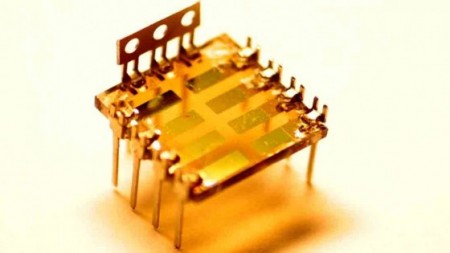The Cavendish Laboratory houses the the Department of Physics at the University of Cambridge. Since its founding in 1874 by the 7th Duke of Devonshire, William Cavendish, and the developer of electromagnetic theory, Professor James Clerk Maxwell, the lab has been home to some pretty brainy folks. All told, 29 Cavendish researchers have won Nobel Prizes.
The current Cavendish Professorship of Physics is held by Sir Richard Friend and together with Professor Neil Greenham, the two may be on the verge of a major breakthrough with the formulation of a new kind of solar cell that could capture significantly more of the energy from the sun than current cells.

Solar panels work by absorbing energy from particles of light, called photons, which then generate electrons to create electricity. Traditional solar cells are only capable of capturing part of the light from the sun and much of the energy of the absorbed light, particularly of the blue photons, is lost as heat. This inability to extract the full energy of all of the different colors of light at once means that traditional solar cells are incapable of converting more than 34 percent of the available sunlight into electrical power.
According to a recent paper published in the journal Nano Letters, the Cambridge team has developed a hybrid cell that absorbs red light and harnesses the extra energy of blue light to boost the electrical current. Typically, a solar cell generates a single electron for each photon captured. However, by adding pentacene, an organic semiconductor, the solar cells can generate two electrons for every photon from the blue light spectrum. This could enable the cells to capture 44 percent of the incoming solar energy.
Although the research looks quite promising, Bruno Ehrler, one of the team’s researchers and the paper’s main author,sounded a note of caution about building too much excitement into the announcement. “Organic and hybrid solar cells have an advantage over current silicon-based technology because they can be produced in large quantities at low cost by roll-to-roll printing,” he said in a statement. “However, much of the cost of a solar power plant is in the land, labor and installation hardware. As a result, even if organic solar panels are less expensive, we need to improve their efficiency to make them competitive. Otherwise, it’d be like buying a cheap painting, only to find out you need an expensive frame.”